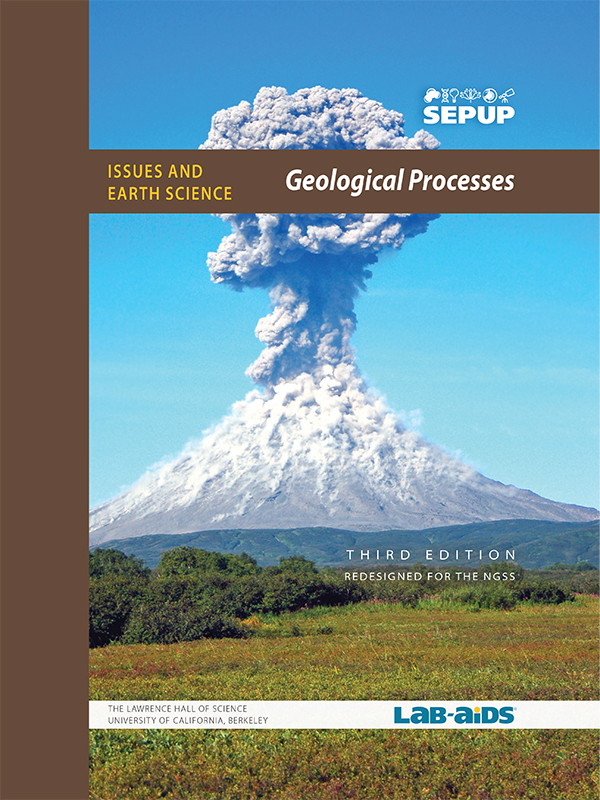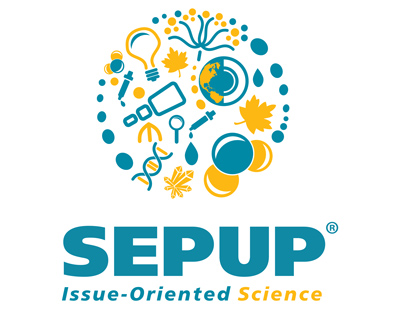Geological Processes: Teacher Links

Teacher Links
This Geology unit is part of SEPUP’s Issues and Science three-year Middle School program. Each unit of the program incorporates science and engineering concepts and practices with current issues.
Geology
Learning Pathway Diagrams for this unit:
MS-ESS2-1, MS-ESS2-2, MS-ESS2-3, MS-ESS3-1, MS-ESS3-2
Activity 1
Storing Nuclear Waste
Yucca Mountain Repository
In 1987, the U.S. government selected Yucca Mountain in southern Nevada as an underground storage site for nuclear waste. However, in 2011, government officials decided not to build there. Visit this site to learn more about long-term storage of nuclear waste at Yucca Mountain.
Activity 3
Modeling Landslides
Video of Modeling Landslides
This video from NOVA, provided via the PBS LearningMedia website, shows how scientists develop and use models to learn more about landslides. You may be required to create a free account on PBS LearningMedia to access this video.
Extension: Preparing for Landslides
Visit this link to learn how to be prepared for a landslide.
Activity 6
Mapping Locations of Earthquakes and Volcanoes
Mapping Location Data
Follow this link to complete the activity as described in the Student Book. The earthquake data set is modified from the USGS earthquake database. It contains significant (6.5+magnitude earthquakes) from 1998–2018. The volcano data set includes shield volcanoes, stratovolcanoes, and cinder cone volcanoes from NOAA Volcano Locations database.
Helpful hints for using CODAP
If you experience technical difficulties using the CODAP program, you may opt to have your students use: This Dynamic Planet: World Map of Volcanoes, Earthquakes, Impact Craters, and Plate Tectonics linked here. Students will not be able to complete Procedure Steps 8 and 9 in the Student Book using this map, but they will still be able to observe global patterns in the occurrence of earthquakes and the locations of volcanoes.
Extension: NOAA Natural Hazards Viewer
Explore the NOAA natural hazards viewer to learn about the natural hazards associated with earthquakes and volcanoes.
Latest Earthquakes
This website shows the locations and magnitudes of the latest earthquakes magnitude 2.5 or greater that have occurred worldwide.
Activity 7
Observing Earth’s Moving Surface
UNAVCO Instructions
Instructions for accessing GPS time-series plots on the UNAVCO website.
Activity 8
Beneath Earth’s Surface
Extension 1: Seismic Waves Viewer
Students use this link to learn more about how seismic waves interact with the layers of the Earth. Be sure students check out the Animations tab.
Extension 2: Inge Lehmann: Discoverer of Earth’s Inner Core
Students use this link to learn about Inge Lehmann, an important geologist who used seismic-wave data to figure out that the Earth’s inner core is solid.
Activity 9
Modeling Earthquakes
Introduction to Faults
Learn more about what a fault is.
Berkeley Seismo Lab: Hayward Fault System
Learn more about California’s Hayward fault.
USGS Hayward Fault EQ scenarios
Learn more about what might happen along the Hayward fault in different Earthquake scenarios.
USGS Information about faults in the Bay Area of California
Learn more about earthquakes and faults in California.
Activity 10
Plate Boundaries
Plate Motion Simulation
Students use this simulation to complete the Procedure for Activity 10 in the Student Book. They observe the movement of convergent, divergent, and transform plate boundaries over periods of time from 10 years to 20 million years.
Activity 12
The Continent Puzzle
Predicting Plate Movements
Students use this link to learn what scientists predict about future plate movements and consider how Earth’s surface will be different in the future.
Satellite Data on Plate Movement
Examine a world map showing plate movement based on satellite data. You can then scroll down to the index map to select a region of the world and see vectors showing the direction and magnitude of movement. Site developed by NASA’s Space Geodesy Laboratory.
Optional Activity: Continental Drift
After Activity 12, you may wish to provide students with an additional opportunity to evaluate evidence related to continental drift. In this optional Activity (Student Book pages and Teacher’s Edition pages from Activity 41 from Issues and Earth Science Second Edition) students first determine which statements constitute evidence, and they then identify the statements that support this idea of continental movement. Students use this evidence to construct an explanation about the movement of the continents over geological time.
Activity 13
The Theory of Plate Tectonics
Video: Wegener’s Development of Continental Drift
This video segment chronicles the Alfred Wegener’s development of the theory of continental drift and is from WGBH, provided via the PBS LearningMedia website. You may be required to create a free account on PBS LearningMedia to access this video.
Video: Theory of Plate Tectonics
Using evidence from Alfred Wegener’s theory of continental drift, this video from WGBH, provided via the PBS LearningMedia website, details the evidence that supported the theory of plate tectonics. You may be required to create a free account on PBS LearningMedia to access this video.
Theory of Plate Tectonics
Learn more about the theory of plate tectonics.
Activity 14
What Makes the Plates Move?
Video: What Are the Forces that Drive Plate Tectonics?
An article and video that discuss how the transfer of thermal energy and gravity are important factors in plate motion.
Activity 17
Enough Resources for All?
Global Water, Sanitation, and Hygiene
Health Topic: Water
Water, Sanitation, and Hygiene
Students use the links to begin their research to discover where lack of access to drinking water and sanitation have the biggest impacts. Students consider the following questions: What are the impacts? What is already being done, and what more can be done?

